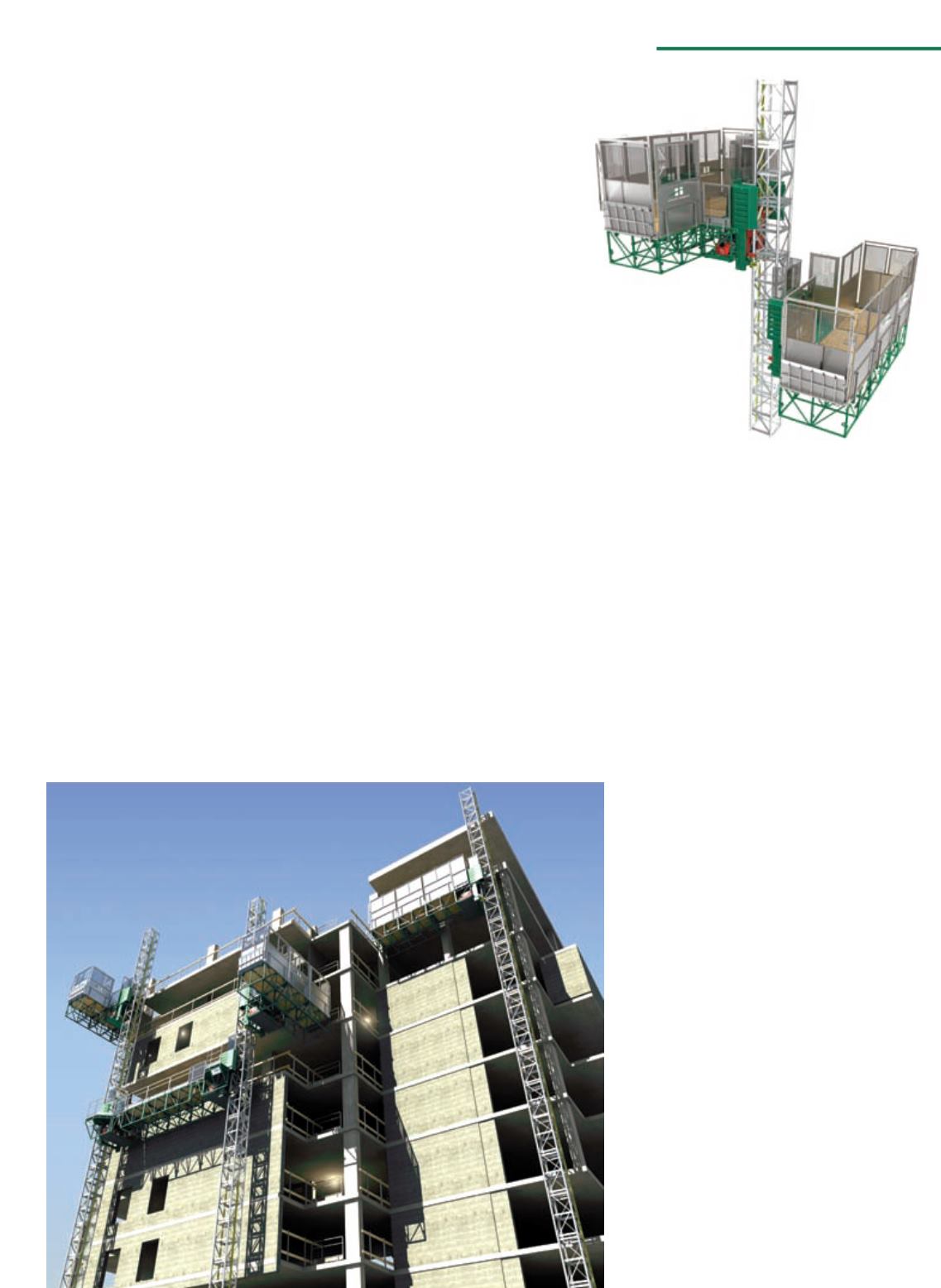
35
NOVEMBER-DECEMBER 2013
ALH
MAST AND HOIST SUPPLEMENT
TRANSPORT PLATFORMS
One of the newer kids on the block, the transport platform
is offered by many OEMs who already produce MCWPs.
Here’s a look at some defining features.
hazards, and after ensuring that it is safe to
continue, facilitates descent at the reduced
speed to provide the operator with the ability to
continue to monitor the landing zone until he/
she reaches the ground. The reason for this
feature is that in the TP’s operating environment
there is no requirement to protect the landing
zone with an 8- to 10-foot-high enclosure, on
the basis that it operates in a more controlled
environment.
RESTRICTED TRAVEL SPEED
The transport platform’s speed is limited to
40-feet per minute. This significantly slower
speed (personnel/material hoists can travel at
hundreds of feet per minute) is easily enough to
provide excellent productivity within its intended
environment, but is slow enough to make it
easier to control, and it therefore requires a less
sophisticated operating and drive system.
According to manufacturers, it’s a
misconception in the construction industry
to assume that the TP is a “cheap personnel
hoist.” The TP evolved up from the mast
climbing work platform, not down from the
personnel hoist. There was a clear gap in the
industry for a method of delivery of personnel
and material to projects where the budgetary
restrictions excluded the traditional construction
personnel elevator.
LIFTING CAPACITY AND SETUP
The TP is usually capable of lifting personnel
to only 50 percent of its capacity. This is based
on the combination of personnel and material
which could be present in the platform. This
restriction provides better management of both
material and personnel during movement and
provides better operator visibility.
The unit is set-up to be further away from
the structure than the personnel/material hoist.
Most TPs are setup about 18 inches away from
the structure and when it gets to its delivery
level integrated door/ramp arrangement
is activated. This is very different from the
personnel/material hoist which is usually set-
up about 2 inches away from the structure.
However, when travelling at 18 inches away,
there is no chance of a shear hazard so the
platform cage arrangement doesn’t have to be
as enclosed as the personnel/material hoist.
FLEXIBILITY
As previously stated, the TP evolved up from
the mast climber, and many TPs are capable
of being re-configured back into mast climber
use. This offers a great flexibility for equipment
owners. Additionally, the control panel is similar
or the same for both configurations, providing
operator familiarity.
The TP is also capable of being configured
into different platform dimensions and is also
capable of being used in conjunction with mast
climbers, sharing the same mast.
■
The transport
platform explained
T
he transport platform (TP) is the newest
type of mast climbing work platform on
the market, and most manufacturers of
MCWPs offer a TP model. It is quickly becoming
a popular method of getting personnel and
materials to various levels of the structure and
TP use is spreading quickly throughout North
America. The TP offers flexibility and high levels
of productivity.
So what are the main operating features of
this fast growing tool of the trade?
Defining Features
GROUND ENCLOSURE
During descent the TP is designed to stop 10
feet from the ground. It then waits 3 seconds
before allowing the operator to descend to the
ground at a reduced speed. This feature is
designed to offer the operator the opportunity
to inspect the landing zone for obstacles and
The transport
platform’s speed is
limited to 40-feet
per minute.
The transport platform (TP) is the newest
type of mast climbing work platform on
the market, and most manufacturers of
MCWPs offer a TP model.


